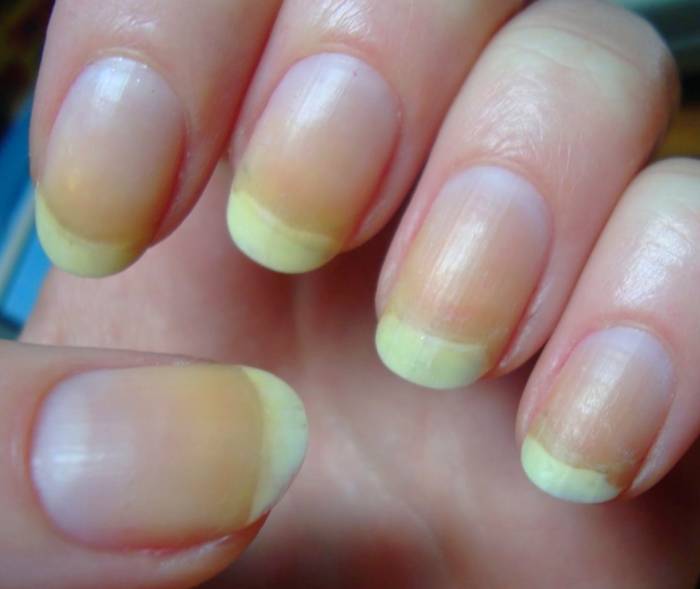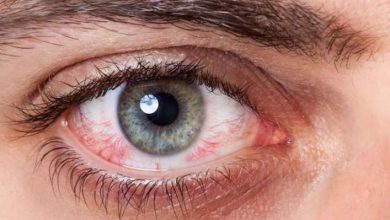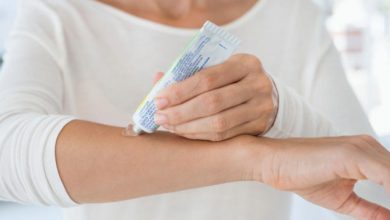What disease causes yellow nails? + video
Yellow nails can be indicative of various underlying health issues, and one common condition that can lead to this discoloration is known as “yellow nail syndrome” (YNS). Yellow nail syndrome is a rare disorder that primarily affects the nails, typically those on the fingers but sometimes also on the toes. While YNS itself is not a disease, it is often associated with certain medical conditions that contribute to its development.
Doctor Explains what your NAILS say about your HEALTH: Top 10 Nail Problems :
The primary characteristics of yellow nail syndrome include the yellowing of the nails, slow nail growth, and thickening of the nails. In addition to the nail changes, individuals with YNS may experience respiratory symptoms such as chronic cough, difficulty breathing, and recurrent lung infections. Swelling of the legs and feet due to fluid accumulation, known as peripheral edema, is also a potential symptom of yellow nail syndrome.
Yellowing of the nails: Causes & treatment :
The exact cause of yellow nail syndrome is not fully understood, which can make diagnosis and treatment challenging. However, it is believed to be related to a combination of factors, including impaired lymphatic drainage, chronic inflammation, and genetic predisposition. The lymphatic system plays a crucial role in maintaining fluid balance and immune function in the body. When this system is compromised, it can lead to the accumulation of lymphatic fluid in the nail beds and surrounding tissues, resulting in the characteristic yellow discoloration.
Yellow nail syndrome can be associated with a variety of underlying conditions, such as respiratory diseases like chronic obstructive pulmonary disease (COPD), bronchiectasis, and lung infections. It has also been linked to autoimmune disorders, thyroid dysfunction, and even some types of cancer. Therefore, diagnosing yellow nail syndrome often involves a comprehensive evaluation of the individual’s medical history, physical examination, and potentially additional tests to rule out or identify any related health issues.
Managing yellow nail syndrome requires a multidisciplinary approach. Treatment focuses on addressing the underlying causes and managing associated symptoms. If an underlying condition is identified, treating that condition can potentially alleviate the nail discoloration and other symptoms. For example, managing respiratory conditions effectively may help improve lymphatic drainage and reduce nail changes.

Furthermore, maintaining healthy nails goes beyond addressing yellow nail syndrome. Nails, which are made of a protein called keratin, can provide valuable insights into overall health and well-being. Various factors can influence the appearance and health of nails, and understanding these aspects can contribute to optimal nail care.
Diet plays a significant role in nail health. A well-balanced diet rich in vitamins, minerals, and proteins is essential for promoting strong and vibrant nails. Biotin, a B-vitamin, is particularly known for its role in nail health. Foods like eggs, nuts, seeds, and leafy greens are good sources of biotin. Adequate hydration is also crucial to maintain nail moisture and prevent brittleness.
Practicing good nail hygiene is another important aspect of nail care. Keeping nails clean, trimmed, and moisturized can help prevent issues such as fungal infections and ingrown nails. Regularly moisturizing the cuticles and using a gentle nail file to shape the nails can contribute to their overall health and appearance.
Avoiding harsh chemicals and excessive trauma to the nails is essential. Overexposure to water and chemicals, such as those found in cleaning products, can weaken nails and make them more prone to breakage and discoloration. Wearing gloves while doing household chores and using a protective base coat before applying nail polish can help safeguard the nails.
Incorporating certain habits into your routine can also promote nail health. Massaging the nails and surrounding area can improve blood circulation, which in turn can enhance nail growth. Using nail strengtheners or hardeners with ingredients like calcium and protein can provide additional support for brittle nails.
It’s important to note that nail changes can also be a result of aging. As we grow older, the rate of nail growth may slow down, and nails can become more brittle. However, practicing healthy habits can help mitigate some of these effects and keep nails looking their best.
In conclusion, while yellow nails can be a symptom of conditions like yellow nail syndrome, maintaining overall nail health involves a combination of factors, including diet, hygiene, protection, and habits. Nails can provide valuable clues about our general health, and paying attention to their appearance and changes can lead to early detection of potential health issues. Incorporating these tips into your nail care routine can help promote strong, vibrant nails and contribute to your overall well-being. If you have concerns about your nail health or notice significant changes in your nails, consulting a healthcare professional or dermatologist is recommended for personalized guidance and care.










